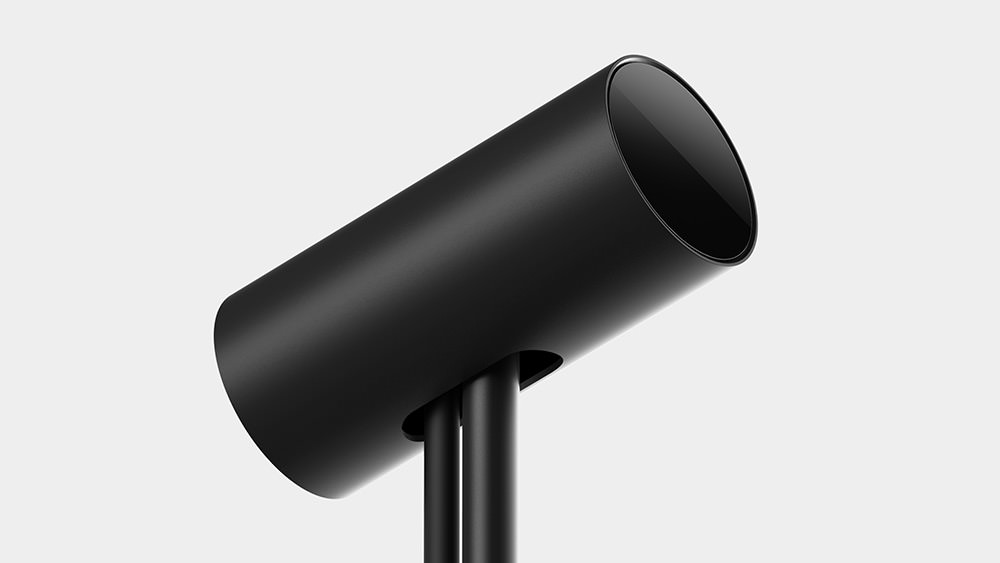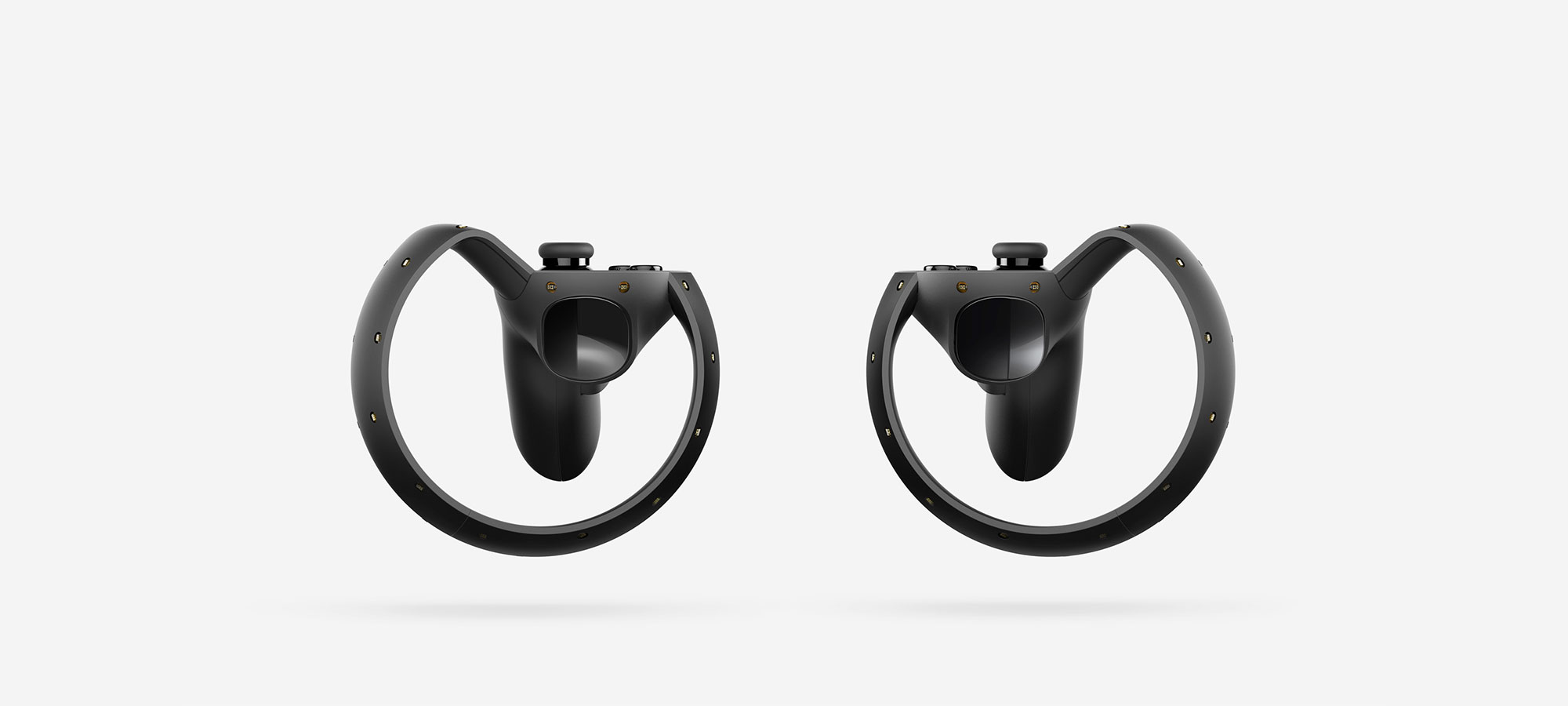Oculus Unveils Final Rift Design, Oculus Touch Controllers
Oculus revealed the final consumer version of its Oculus Rift headset and associated input devices at an event in L.A. today. The spiffed-up Rift looks to be a good step or two better than even the Crescent Bay version, and Oculus had a few tasty surprises in store at the event, too.
The Headset
The final version of the headset has been redesigned to be lighter and more comfortable, the idea being that you can wear it for longer periods of time without fatigue. If you've experienced any Rift demo, you know that the headset can get a little heavy. If you wear glasses, you know that the thing can crush your frames.
The headset is now designed to accommodate those of us who are bespectacled, and Oculus also wisely built in the ability to adjust the distance of the lenses between a given user's eyes. Brendan Iribe noted on stage, for example, that he and Palmer Luckey have different measurements (they're off by several millimeters). If you can't set the eye measurements properly, the experience will be negatively impacted.
Continuing with the comfort angle, it also features a new design for a strap. In past shows, we used a similar design to the final product: a band that linked in the back of your head to a triangular plate. The version showed today features a smaller, hollow triangle in the rear of the strap. The shape is meant to be more secure for the head, but with a smaller size, it's still able to perform as intended without being uncomfortable.
It's also now covered in fabric, which looked to be a similar sort of soft touch material that you see on Surface keyboards and the OnePlus One.
Finally, the final Rift has headphones attached to the sides to provide immersive audio to match the immersive visuals. If you wish to use better headphones, you can; the attached ones are easily removable. (Cue headphone vendors scrambling to work up marketing materials that say, "Optimized for Oculus Rift!")
The Sensor
In addition to the headset, we also saw the final version of the sensor, which looks a lot like a very small microphone stand with a black circular base. The sensor itself is a small cylinder at the top of the stand, and its compact size means you can easily place it between your keyboard and monitor.
Get Tom's Hardware's best news and in-depth reviews, straight to your inbox.
Iribe also talked about the sensors on the Rift headset. Tracking and latency are important parts of the experience, so the headset will have what Iribe called "Constellation" tracking. Most of the sensors are placed on other edges of the headset, but there are also five sensors in the middle forming an upside down pentagon. The setup is meant to provide more precise tracking of head movements, while also ensuring that latency is brought down to a minimum.
Xbox One Controller?
Including a gamepad with the Oculus Rift is a no-brainer, especially considering the titles that will be coming to the platform (more on that in a later post). However, instead of creating its own gamepad (as Valve has tried to do with its Steam OS platform), Oculus has opted to simply bundle an Xbox One Controller with the Rift.
Microsoft's Phil Spencer took the stage briefly to expound on the virtues of the controller and also noted that it would include an Xbox streaming function, similar to the Windows 10 experience. He also said that the Oculus Rift will have tight integration with Windows 10, especially concerning features of DX12.
Further Input: Oculus Touch
We were a bit surprised at the Xbox One controller inclusion, but then Oculus co-founder Palmer Luckey took the stage and whipped out the company's big surprise of the day: a pair of nunchuk-type controllers called Oculus Touch. (Internal codename: "Half Moon.")
He noted that different games require different types of input, and although a gamepad is ideal for many titles, VR users will need something more.
Oculus Touch consists of two wireless controllers, which are mirror images of one another. Each has an analog thumbstick, trigger button, and two additional buttons adjacent to the thumbstick. Around the edges there appear to be sensors, although Oculus didn't say anything specific about them, so we're speculating on that point.
But beyond anything as neat-but-mundane as Wiimotes, Oculus Touch was built to give users something that made their virtual hands and real hands feel the same. Luckey called this "hand presence," giving users the ability to manipulate items in a virtual world, such as a gun on a table. With Oculus Touch, you can pick up the gun, fire it, throw it, or whatever, and you shouldn't have to think about it. Luckey called this effect "low mental load."
The controllers feature high-precision 6DOF tracking, just like the headset, with integrated inertial measurement units. Thanks to sensors in the inner portion of the devices, you can also input, control and communicate using gestures. For example, you can point, wave or give a thumbs up. You can even, in some circumstances, shoot a gun by aping the gesture with your fingers.
Oculus also built in haptic feedback, so you should have some physical sense of what your hands are touching, such as when you pick something up. Perhaps it could also, for example, generate a little kick when you shoot a gun.
The Oculus Touch controllers have a wrist tether, just like Wiimotes, and they're designed (like the headset) to be ergonomic such that you won't physically tire of using them over long periods of time, and they're easy to put on and take off.
The new demo showcasing these features is called Toy Box, a social, multiplayer experience.
Q1 2016
We've all been waiting a long, long time for the Oculus Rift (or any other serious HMD) to become a Real Thing that you can actually buy. Judging by the ergonomic improvements Oculus showed regarding the headset and Oculus Touch controllers -- the Crescent Bay experience we had at CES seems so incomplete now -- the wait was worth it on the hardware side.
Unfortunately, there was no mention of pre-orders or pricing information, so we're all still in the dark there. However, Oculus reiterated the Rift's availability of Q1 2016, so we don't have too much longer to wait regardless.
In the meantime, we'll eagerly check out all the new titles for the Rift (we promise, more on that in another post coming shortly), not to mention the new gear, when we head out to L.A. next week for E3.
Follow us @tomshardware, on Facebook and on Google+.
Seth Colaner previously served as News Director at Tom's Hardware. He covered technology news, focusing on keyboards, virtual reality, and wearables.
-
CaedenV So if I am reading this right you get the headset, 2 'touch' controllers, an XB1 controller and a glorified IR webcam... just how expensive is all that hardware going to be!?!?!Reply
Still, looks fantastic. Certainly something I pick up after my next PC upgrade... which sadly means I will probably be waiting for V2 -
jaber2 ReplySo if I am reading this right you get the headset, 2 'touch' controllers, an XB1 controller and a glorified IR webcam... just how expensive is all that hardware going to be!?!?!
I would think about $499?
Still, looks fantastic. Certainly something I pick up after my next PC upgrade... which sadly means I will probably be waiting for V2 -
scolaner ReplySo if I am reading this right you get the headset, 2 'touch' controllers, an XB1 controller and a glorified IR webcam... just how expensive is all that hardware going to be!?!?!
Heh, yeah, better not to think too hard about it lest you inflict pain on yourself. ;)
I would think--and this is based purely on my own logic and nothing more--that Oculus will sell this in multiple kits.
For example, one with just the Rift and sensor; one with those plus the Xbox controller; one with those plus the Touch controllers. Maybe one with the Touch controllers and no Xbox controller.
Or maybe you can buy everything separately. I dunno, but it makes sense to me. -
scolaner Reply16036495 said:Until they eradicate the headache/nauseous issue I'm staying away...
Pretty sure the headache/nausea stuff has been ameliorated for a while now.
Also, if you're on DK2 (loki1944), you're now two generations behind, development-wise. Seems silly to not give the full retail version a go based on a less-than-optimal experience with an old dev version, no? -
leftstep ReplySo if I am reading this right you get the headset, 2 'touch' controllers, an XB1 controller and a glorified IR webcam...
I'm pretty sure the half moon, or touch controllers, will be a separate purchase. -
voodoobunny Oculus RiftReply
+ elliptical machine for throttle control (you run in real life to run in-game)
+ dual Oculus Touch for weapon control
+ Mechwarrior Online
= an ultimate Battletech experience! Also a brilliant weight-loss strategy. -
loki1944 Reply16036558 said:16036495 said:Until they eradicate the headache/nauseous issue I'm staying away...
Pretty sure the headache/nausea stuff has been ameliorated for a while now.
Also, if you're on DK2 (loki1944), you're now two generations behind, development-wise. Seems silly to not give the full retail version a go based on a less-than-optimal experience with an old dev version, no?
Yeah, no. Similar things were claimed with the DK 2, I'm not falling for bs this time higher refresh and resolution is never going to be enough to fix the brain's reaction to FPS movement. And the experience itself is underwhelming, more novelty than anything. Something like the Hololens is the only gaming apparatus I'll put on my face now. -
everlast66 Nobody cares any more for your FB product, Luckey.Reply
Waiting for the Valve/HTC Vive as they care for us gamers.





